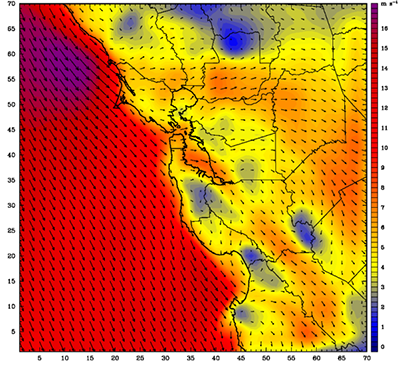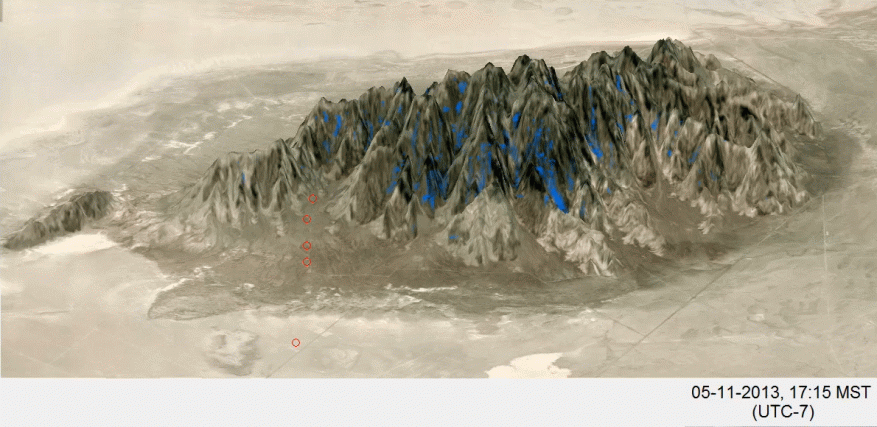The Weather Research and Forecasting (WRF) model is a U.S. community numerical weather prediction (NWP) tool, collaboratively developed from contributions by numerous research institutions and government agencies. WRF is the primary numerical weather prediction model used by NARAC to generate meteorological fields when the coverage provided by weather observations and/or the resolution of publicly available forecast data are insufficient to capture the complex flow patterns necessary for accurate plume predictions.
NARAC is investigating and developing operational meteorological data assimilation methods such as observational nudging and 4-dimensional data assimilation (FDDA). These methods incorporate observational data to improve WRF model initialization and the accuracy of predicted meteorological fields. NARAC also is researching the use of multi-physics model ensembles to evaluate uncertainty in WRF predictions.
To improve simulations in the planetary boundary layer and enable multiscale atmospheric simulation, LLNL has developed a numerical toolkit, which includes advanced turbulence models, algorithms to improve downscaling, vertical mesh refinement for multiscale simulation, and immersed boundary methods for improved simulations over complex terrain. The toolkit is being implemented within the Weather Research and Forecasting (WRF) model, which enables easy collaboration among industry, academia, and DOE laboratories.






